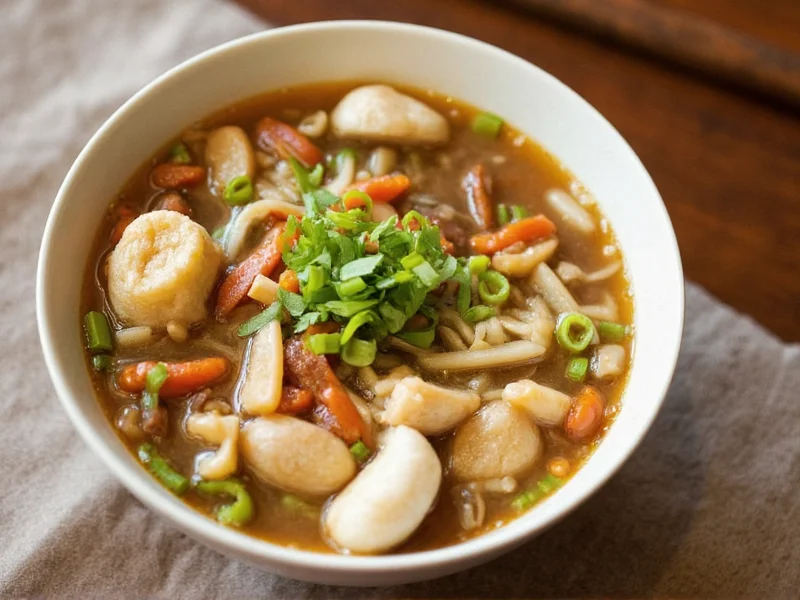Many English speakers stumble over how to pronounce pho soup correctly, often saying ‘foe’ or ‘fuh-oh.’ The authentic Vietnamese pronunciation is simpler than you might think. Understanding pho soup pronunciation opens doors to appreciating this beloved culinary tradition more deeply.
The True Pronunciation of ‘Pho’
The word ‘pho’ (written as ‘phồ’ in Vietnamese) is pronounced as a single syllable: ‘fuh.’ Imagine the ‘fu’ in ‘duh’ but shorter. The ‘ph’ combination in Vietnamese doesn’t make the ‘f’ sound as in English ‘phone,’ but rather a soft ‘p’ that transitions to an ‘h’ sound, resulting in what English speakers hear as ‘f.’
Vietnamese is a tonal language with six distinct tones, and ‘pho’ uses the ‘ngang’ (flat) tone. This means your pitch should remain level—not rising or falling—when saying the word. Mastering this subtle aspect separates a decent pronunciation from an authentic one.
Why English Speakers Get It Wrong
The confusion around how do you pronounce pho soup stems from several factors:
| Common Mispronunciation | Why It’s Incorrect | Better Alternative |
|---|---|---|
| ‘Foe’ (like Shakespeare’s character) | Uses English phonetic rules instead of Vietnamese | ‘Fuh’ with flat tone |
| ‘Fuh-oh’ (two syllables) | Vietnamese ‘pho’ is one syllable | Single-syllable ‘fuh’ |
| ‘Pho’ with hard ‘p’ sound | Misses the soft transition to ‘h’ sound | Gentle ‘f’-like sound |
These mispronunciations happen because English speakers apply familiar English spelling rules to a Vietnamese word. The ‘ph’ combination typically makes an ‘f’ sound in English (as in ‘phone’), but in Vietnamese, it creates a different sound altogether. This pho pronunciation guide helps bridge that linguistic gap.
Linguistic Origins of ‘Pho’
The term ‘pho’ likely evolved from the French dish ‘pot-au-feu’ (meaning ‘pot on fire’), introduced during Vietnam’s colonial period. Vietnamese cooks adapted the French beef stew into what we now know as pho soup, and the name transformed phonetically.
Interestingly, the written form ‘pho’ uses the Latin alphabet with diacritical marks that indicate tones. The proper spelling includes a hook above the ‘o’ (‘ồ’), signaling the flat tone. When written in English contexts, these marks are typically omitted, contributing to pronunciation confusion.
Regional Pronunciation Variations
While ‘fuh’ represents the standard Northern Vietnamese pronunciation (from Hanoi, where pho originated), Southern Vietnamese (Saigon) speakers often pronounce it with a slight rising inflection, almost like ‘fuh?’ with a questioning tone. However, both versions remain single-syllable pronunciations.
When ordering pho at authentic Vietnamese restaurants, either pronunciation will be understood, though Northern-style establishments might appreciate the flatter tone. This nuance matters less than simply avoiding the common ‘foe’ mispronunciation when asking about how to say pho correctly.
Practical Tips for Perfecting Your Pronunciation
Mastering pho soup pronunciation takes practice. Here are actionable steps:
- Listen to native speakers: Search for ‘how to pronounce pho’ videos featuring Vietnamese speakers
- Practice the flat tone: Say ‘fuh’ while keeping your voice completely level
- Exaggerate initially: Overemphasize the shortness of the syllable to avoid adding extra sounds
- Record yourself: Compare your pronunciation with authentic examples
- Ask for feedback: Vietnamese friends or restaurant staff will appreciate your effort
Remember that Vietnamese tones change meaning completely—the same syllable with different tones can mean ‘cow,’ ‘market,’ or ‘silk.’ While getting the tone perfect isn’t critical for ‘pho’ in English contexts, the flat tone remains essential for authentic pho pronunciation.
Why Correct Pronunciation Matters
Properly pronouncing ‘pho’ shows respect for Vietnamese culture and culinary tradition. As this dish has gained global popularity, maintaining its authentic identity becomes increasingly important. When you know what is the correct way to pronounce pho, you participate more meaningfully in cross-cultural food experiences.
At Vietnamese restaurants, using the correct pronunciation often leads to warmer interactions with staff and potentially more authentic preparation suggestions. It demonstrates that you’ve taken time to understand the culture behind the cuisine—something Vietnamese chefs and restaurateurs genuinely appreciate.
Common Questions About Pho Pronunciation
Many people wonder why such a simple word causes so much confusion. The answer lies in the fundamental differences between Vietnamese and English phonetics. Vietnamese has sounds and tones that don’t exist in English, making direct translations challenging. This explains why even seasoned food enthusiasts make common pho pronunciation mistakes.
Final Thoughts on Pho Pronunciation
Learning how do you pronounce pho soup correctly represents more than just linguistic accuracy—it’s a gesture of cultural appreciation. While ‘fuh’ might seem deceptively simple, mastering this pronunciation connects you to Vietnam’s rich culinary heritage. Next time you visit a Vietnamese restaurant or discuss this beloved dish, you’ll know exactly what is the correct way to pronounce pho, enhancing both your dining experience and cultural understanding.
Remember that language learning is a journey. Even getting close to the authentic pronunciation shows respect and curiosity—qualities that Vietnamese chefs and communities value highly. The effort you put into proper pho pronunciation demonstrates that you see beyond the dish to the culture that created it.











 浙公网安备
33010002000092号
浙公网安备
33010002000092号 浙B2-20120091-4
浙B2-20120091-4